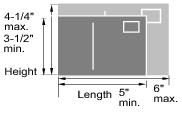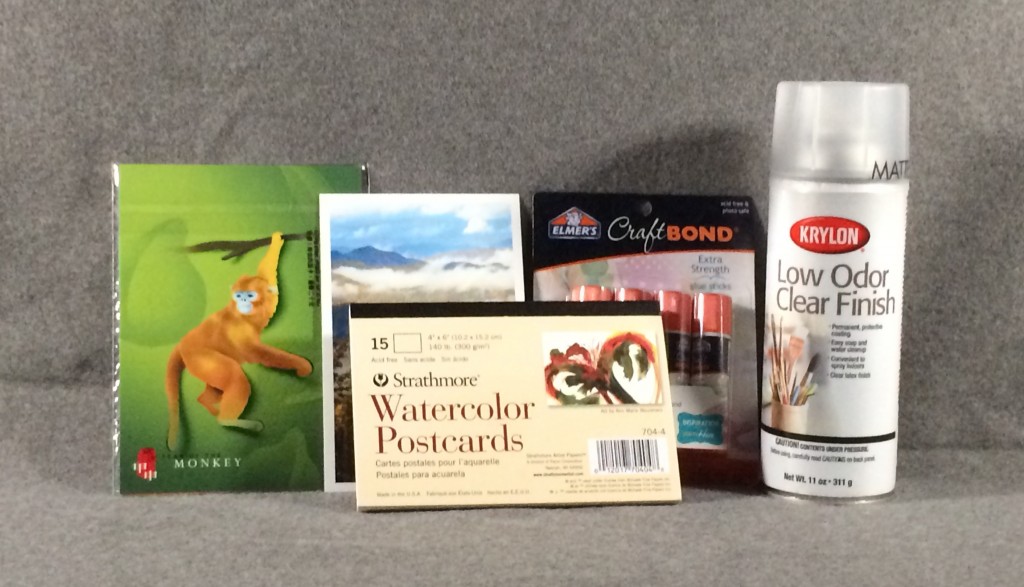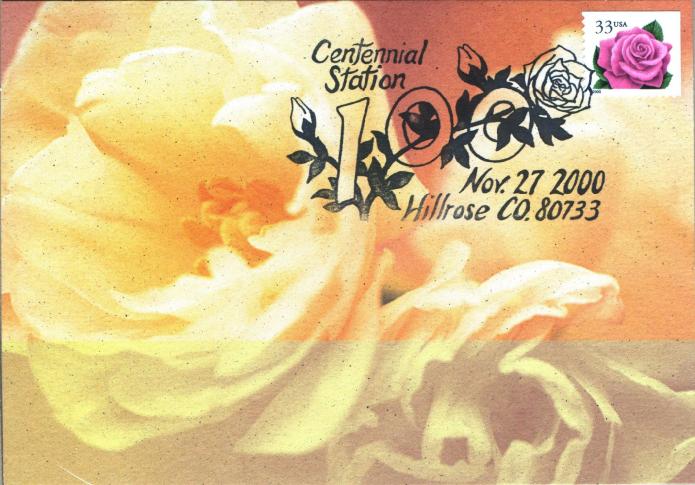Preparing postcards
Taking it to the max
A traditional postcard has a picture on one side and space for the message, address, and postage on the other. A "maximum card" has the stamp on the side with the picture. The address and postage on a piece of mail are not allowed to be on different sides, so a maximum card either needs an address (on a temporary label) on the photo side, or (preferably) to be unaddressed and returned to you inside a protective envelope.
Window of opportunity
The USPS is strict about permitted sizes that qualify for postcard-rate postage. All postcards must be:
- from 3½ to 4¼ inches high
- from 5 to 6 inches long
- from 0.007 to 0.016 inches thick

Image taken from the USPS DMM
Yes, this is a tiny window of permitted sizes. By the way, next time you are on vacation, measure the bigger postcards for sale: many commercially-available postcards exceed these dimensions and will be returned to sender unless you affix letter-rate (not postcard-rate) postage to them.
If you use office supplies a lot, picture it like this: a 3×5 index card is a little bit too short; a 5×7 index card is a little too big; a 4×6 index card is just right. And as much as possible, I'd recommend sticking to making 4 by 6 inch postcards, if for no other reason than the ease of finding attractive archival albums for 4×6 photos.
Cost
As of 2016, a postcard costs $0.35 to mail compared to $0.49 for a letter. A postcard that exceeds the maximum size of 4¼" × 6" or is thicker than 0.016 can be mailed at the letter rate, as long as it is under the permitted dimensions for a letter.
Something old, something new…
So you're ready to send away for a cancel on a postcard. What kind of postcard should you use?
You can:
- Use a modern postcard (usually these have a glossy photo finish)
- Use a vintage postcard (usually these have a matte finish)
- Use a blank postcard, either decorated or left blank
- Cut a postcard from some other cardstock, such as a greeting card

Concerns
Cancels (of all sorts) can have a problem sticking to glossy postcards. If you are using these, you may want to invest in a can of matte finish spray (and practice using it on something unimportant). Apply the finish before you apply the stamp, then place the stamp on top. This will allow the cancel to stick better.
Vintage postcards can suffer from mildew. This is a big deal. You don't want them infecting your other philatelic materials. You might want to avoid ever using a postcard that smells mildewy, but sometimes it's irresistible. In those cases, be sure to store them separately from your other philatelic materials (you may want to frame them and put them on the wall or on a desk, for instance).
Many postcards — both vintage and modern — are not of archival quality. They will discolor and break down over time. There are (expensive) preservationist sprays intended to raise the pH of paper items to stabilize them and prevent deterioration. I have never used them, but they do exist.
Many water-activated gums — the adhesives on lick-and-stick stamps — have difficulty sticking to glossy surfaces. This is especially true if you are using older stamps. I highly recommend gluing them to the surface with an archival-quality adhesive (without wetting the gum), especially if you are not using a matte-finish spray.





